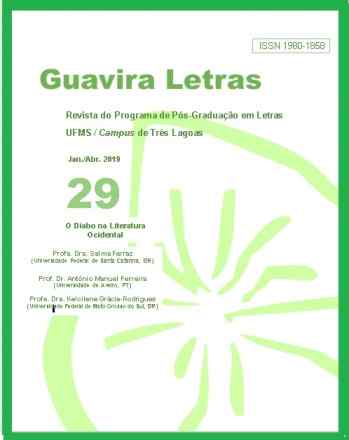REGIÕES CULTURAIS NO RIO GRANDE DO SUL: ESTUDO COMPARATIVO
Guavira Letras
REGIÕES CULTURAIS NO RIO GRANDE DO SUL: ESTUDO COMPARATIVO
Autor Correspondente: I. M. Boniatti | [email protected]
Palavras-chave: região cultural, literatura comparada, literatura brasileira
Resumos Cadastrados
Resumo Português:
Pensar a região como um “constructo” teórico, fundado em semelhanças e diferenças com outras áreas culturais, implica supor uma mescla, ou seja, a fusão de matérias puras que buscam a heterogeneidade com vistas à realidade cultural. Segundo Ricardo Kaliman, essa só se deixa conhecer entrelaçada à suposta homogeneidade paradigmática do conceito de “cultura imaginada” (Benedict Anderson) que reforça ainda mais a “cultura vivida” na América Latina. Assim, pretendo examinar as diferenças regionais formadas a partir de diferentes substratos culturais somados às aquisições posteriores que alteram substancialmente a fisionomia cultural do Rio Grande do Sul. O Rio Grande do Sul passa a ser mapeado em novas sub-regiões, a partir da produção literária local. O trabalho obriga a ampliar o eixo de abrangência comparatista para que a visada interdisciplinar se aproprie de áreas disciplinares limítrofes, como a História e a Sociologia, ultrapassando as fronteiras políticas e lingüísticas e formando espécies de “subconjuntos” no universo literário mundial, representando a emanação e a materialização da dominação política e lingüística, como afirma Pascale Casanova..
Resumo Inglês:
Thinking the region as a theoretical “construct”, founded on similarities and differences with other cultural areas, implies in the assumption of a blend, that is, pure matters seeking for heterogeneity for the sake of cultural reality. According to Ricardo Kaliman, that can only be known when interweaving with the paradigmatic homogeneity of the concept for “imagined culture” (Benedict Anderson), which reinforces the “lived culture” in Latin America. In it the author intends to examine regional differences formed from different cultural substracts added to further acquisitions that can substantially change the cultural physiognomy of Rio Grande do Sul. The state is seen in a map with new sub-regions, formed from their local literary production. The study forces to widen the range for the comparison so that interdisciplinarity may appropriate of boundary disciplinary areas, such as History and Sociology, exceeding political and linguistic frontiers, and forming kinds of “subgroups” in the worldwide literary universe, representing emanation and materialization of political and linguistic dominance, as Pascale Casanova states.

